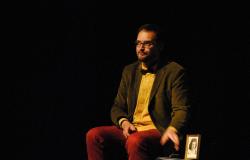Moroccan public schools give very little importance to artistic sectors. Visual arts are only taught in college according to a very basic schedule. Faced with the evolution of new technologies which are responsible for several psychomotor problems in children, the ministerial departments concerned have not yet begun their reform. The case of theater.
Having fallen out of favor at the end of the 1990s, the art of theater no longer appeals to many people. To their great chagrin, the emblematic figures of the sixth art in Morocco, who campaigned to establish an artistic framework aimed at promoting theatrical culture at the national level, have seen their efforts weaken over the years. Not having had the place he deserves despite several decades of cultural activism, the father of the arts has always been the poor relation of public policies.
Professionals in the sector point to a lack of cultural vision, including theater. Others note that schools have not fulfilled their role of raising awareness and introducing people to theater.
Teaching and programs
”In Casablanca, we have fourteen conservatories. Touring a stage space and the backstage of a theater will not cost much,’ underlines Baker Saddiki, cultural actor and son of the late Tayeb Saddiki (1939-2016). Indeed, the Moroccan cultural sphere deplores a public policy which does not highlight artistic sectors from the primary cycle.
As part of the development of the road map aimed at reforming the school system, the Ministry of National Education, also responsible for sports and preschool, has put in place an arsenal of approaches with a view to modernizing the Moroccan public school.
By wanting to make it a place of development, the supervisory ministry realized that certain extracurricular subjects do not receive much attention in current programs. However, ”it is the public sector which must set an example by sealing partnerships to allow students to discover theatre,” comments Mr. Saddiki. According to our interlocutor, the theoretical approach is important since it allows children from a very young age to become familiar with this ecosystem.
However, in the absence of a clear cultural vision, questions are abundant and certain cultural actors report a deserted cultural landscape and artistic skills treated as pariahs. ”We hardly produce plays anymore as was the case years ago,” we lament.
But if professionals in the sector take a dim view of public action, observers of the cultural scene in Morocco criticize the passivity of the department responsible for culture. Gauged by the number of positions offered each year by the culture department, this passivity has “reached its limits”.
Shyness and introversion
”We barely recruit four profiles annually,” they say. Worse still, “we have stopped recruiting teachers specializing in artistic fields for ten years now”, tells us Mouad Aboulhana, teacher and painter based in Tangier. In addition to the lack of human resources, “the quality of teaching and programs needs to be updated, despite the commitment and will shown by the trainers,” says Mr. Saddiki.
Furthermore, and contrary to the inertia characteristic of the public sector, private investors are increasingly interested in this niche. For example, after the enthusiasm generated by arts classes among children, the Studio des arts vivants set up a new program intended for adolescents and adults. ”This means that people really need workshops to express themselves and satisfy their passion, and this is not limited only to a young audience,” explains Mendie Ramaroson, communications manager for the Studio.
Given that the promotion of the arts in Morocco is not considered a priority project by political leaders in Morocco, the private sector largely fills the gap felt by many parents of students, who opt often for acting classes to help their offspring overcome shyness and introversion issues.
Contacted by Maroc Hebdo, Nihel Ouhafsa, theater teacher, assures that going on stage allows young children to gain self-confidence, because they still have the ability to put themselves in the shoes of different people. characters. ”Being on stage in front of an audience, embodying a role the child has already practiced, competing with their classmates, expressing themselves openly, mastering breathing techniques, all of this influences the personality of the learner and the ‘helps one to emancipate oneself and live in society”, analyzes Ms Ouhafsa. Specialists in child psychiatry also recommend that parents whose children suffer from social interaction disorders enroll them in theater or visual arts classes, for example.
For their part, cultural actors are calling for the development of a school program which also takes into account child psychiatry aspects. ”When we have established artistic education for public education students, by installing art workshops run by qualified human resources, our country will have citizens who generate healthy values for humans,” concludes M. . Saddiki.






